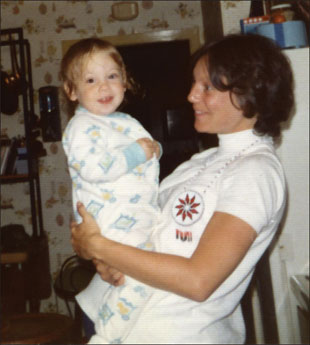| Chapter 2 YOUR CHILD’S DEVELOPMENT, AND HOW TO TALK WITH YOUR CHILD | ||
|---|---|---|
 |  | |
All parents want the best for their children. You may expect your child to face special challenges due to his or her DSD, and naturally you want to help your child in every way possible. One way to help is to understand the stages of your child’s physical, emotional, and mental development. Another way to help is to talk with him or her regularly about his or her DSD and other concerns.
This chapter reviews what you can expect in terms of your child’s development. It also talks about how you can help your child with loving, understanding, honest communication and emotional support. Here are some practical ideas about how to talk with your child and help him or her through challenging times.
Pronouns (he/she): You’ll notice that, in this chapter and in other places in this book, we sometimes use the pronoun “he” and sometimes use the pronoun “she” when talking about a child or a parent. When writing this book, we first tried always using the phrase “he or she,” to include everyone, but we found that that approach made the book harder to read. Please understand that just because we write “he” or “him” doesn’t mean we are talking only about boys and/or men, and just because we write “she” or “her” doesn’t mean we are talking only about girls and/or women. And, when we do use the phrase “he or she,” we do not mean to suggest that your child does not have a clear gender. We are just varying the pronouns we are using to try to make people feel included.
Gender: In this book, we use the word “gender” when we are talking about someone’s identity as a boy or a girl, or a man or a woman. When we talk about a person’s “gender role,” we are talking about whether that person is seen socially as a girl or boy, woman or man. And when we talk about a person’s “gender identity,” we are talking about that person’s inner feeling of being a boy, girl, man, or woman. When we say a baby has been given a “gender assignment” of girl, that means she is being raised as a girl (this has nothing to do with surgery). So when we talk about a person’s “gender identity development,” we’re talking about growth in her inner sense of self.
Gender is different from sex, because “sex” is a word that refers to someone’s physical make-up. (More on that below.) It is important to know that a person’s “sex chromosomes,” sex hormones, and his or her sex parts (like testes or penis) do not always determine what gender identity a person will grow up to feel inside. Sometimes a person has a gender identity that is different than we would have guessed from her sex chromosomes or her genitals.
Gender doesn’t come in two simple types. Most women and girls have at least a few traits, interests, and mannerisms that might generally be labeled “masculine,” and most men and boys have at least a few traits, interests, and mannerisms that might generally be labeled “feminine.” Some people feel in themselves a real blend of “masculine” and “feminine” elements. What’s expected of genders differs somewhat from culture to culture.

Sex: As we talked about in the last chapter, in this book we use the term “sex” to talk about the physical parts of our bodies that have to do with being male or being female. When we talk about a person’s sex, we are talking about whether that person is male or female from a biological (physical) point of view. The aspects of your sex include your “sex chromosomes” (the X and Y chromosomes) and your sex parts like your ovaries or testicles, vagina, clitoris, penis, scrotum, and so on. Sex hormones form another aspect of your sex; sex hormones are chemical messengers in your body that move through the blood. They help your body develop and function sexually. So when we talk about “sex development,” we’re talking about changes in the body in terms of its physical nature. For example, we’re talking about changes in genital anatomy, or changes in sex hormones.
Sexuality and sexual orientation: When we use the word “sexuality,” we are talking about a person’s experience as a sexual being. Sexual intercourse or other intimate relations with a romantic partner would be an example of a person’s sexuality. Sexual desires and feelings are also part of a person’s sexuality. “Sexual orientation” is a term usually used to talk about whether a person is straight (attracted to people of the “opposite” gender), gay (attracted to people of the same gender), or bisexual (attracted to men and women). Although most women are attracted to men, and most men are attracted to women, knowing a person’s sex or gender won’t tell you his or her sexual orientation.
 |
© Accord Alliance a project of the Tides Center |
accordalliance.org |